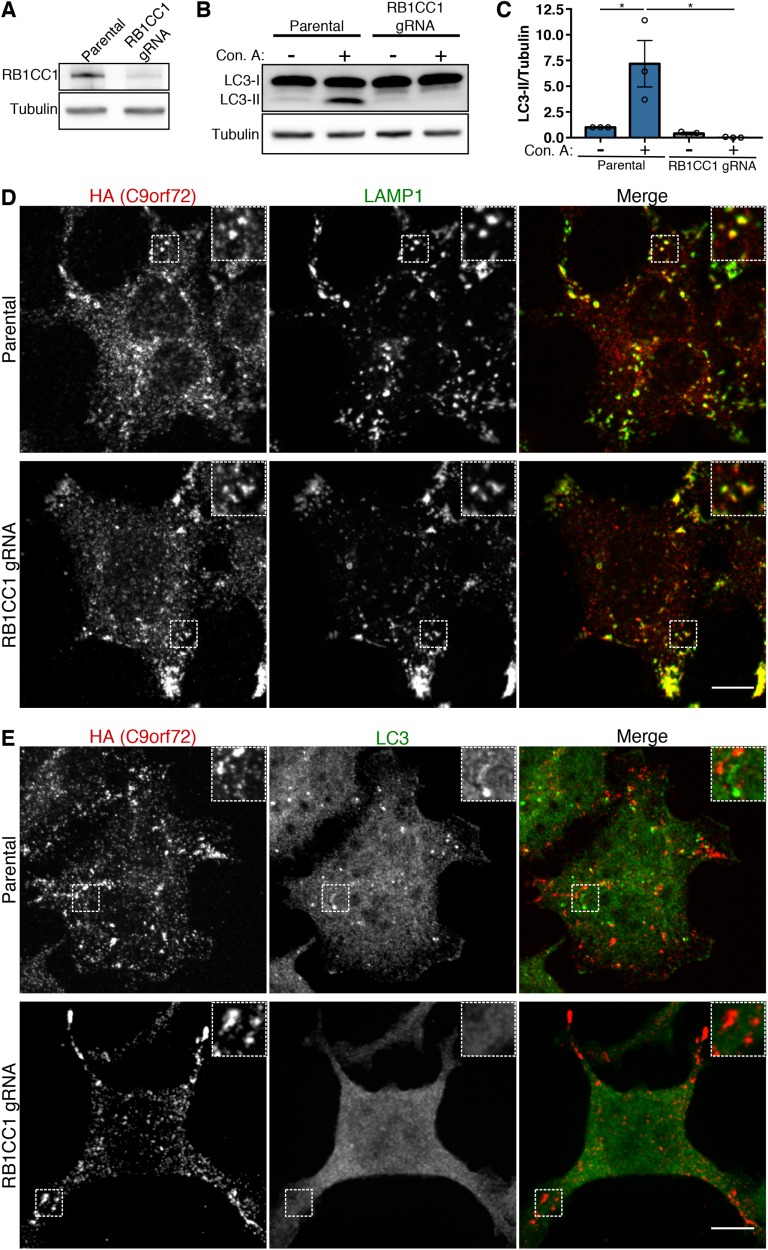FIGURE 7:
RB1CC1 and autophagy are not required for C9orf72 recruitment to lysosomes. (A) Immunoblot analysis of CRISPR-Cas9-mediated RB1CC1 depletion in the HEK293FT cell line that expresses 2xHA-C9orf72 from the endogenous locus. (B) Parental 2xHA-C9orf72 HEK293FT and RB1CC1-depleted cells were treated with and without concanamycin A (V-ATPase inhibitor) for 2 h and autophagic flux was assessed by immunoblotting. Although wild-type cells accumulate LC3-II when treated with concanamycin A, the RB1CC1-depleted cell line does not. (C) Quantification of the ratio of LC3-II to tubulin (mean ± SEM, n = 3, *p ≤ 0.05, two-way ANOVA with Tukey’s multiple comparisons test). (D) Immunofluorescence analysis of C9orf72 localization in starved wild-type and RB1CC1-depleted cells. Scale bar, 10 µm. (E) Immunofluorescence analysis of C9orf72 and LC3 in starved wild-type and RB1CC1-depleted cells. Starved wild-type cells have distinct C9orf72 and LC3 puncta (predominantly autophagosomes), while RB1CC1-depleted cells maintain C9orf72 puncta but lack LC3 puncta. Scale bar, 10 µm.

